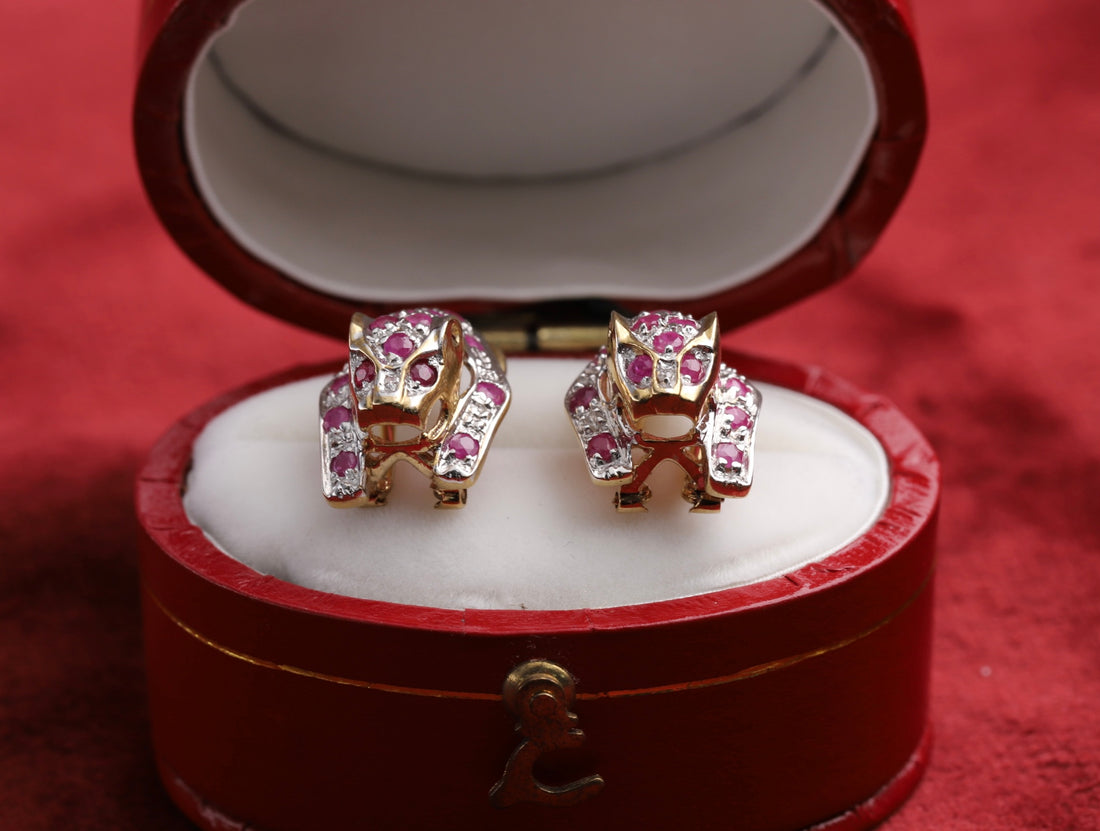
July Birthstone - Ruby!
History
Ruby has been called the most precious of the 12 stones created by God. Ruby retained its importance with the birth of the western world and became one of the most sought-after gems of European royalty and the upper classes. Many medieval Europeans wore rubies to guarantee health, wealth, wisdom, and success in love.
Ruby is one of the most historically significant coloured stones. Rubies are mentioned four times in the Bible, in association with attributes like beauty and wisdom. In the ancient language of Sanskrit, ruby is called ratnaraj, or “king of precious stones.” The English name “ruby” comes from the Latin word “ruber” and “rubeus”, meaning red.
Present
Desire for ruby is just as great today as it always has been. As a symbol of passion, ruby makes an ideal romantic gift. Consumers are drawn to the lush colour because it also signifies wealth and success.
The most common use for rubies is jewellery. However, both natural and synthetic rubies are used in a variety of applications such as watchmaking, medical instruments, and laser because of their incredible strength and red fluorescence.
Caring for your Rubies
You don't need highly sophisticated equipment to clean your ruby jewellery. All you need is a bowl, warm water, gentle detergent, and a toothbrush with soft bristles. Dilute the soap in warm water and soak your jewellery in it for a few minutes or even overnight.
The Black Prince's Ruby and Don Pedro the Cruel
The Black Prince’s Ruby is believed to be mined in Kuh-i-Lal, Badakhshan’s famous balas ruby mines, present-day Afghanistan and Tajikistan. The gemstone was first recorded in the 14th century when it was stolen from the Prince Abu Sa’id of the Moorish Kingdom of Granada by Don Pedro the Cruel, the ruler of Seville, Spain.
According to historical records, Prince Sa’id was going to surrender to King Don Pedro when he was overtaking Granada, but Pedro had cruel plans. In 1366 Don Pedro welcomed Prince Sa’id and his attendants to discuss the terms of his surrender and murdered him.
After searching the Prince’s body, Don Pedro found a large red gemstone, the size of an egg, and took it into his possession. It was believed that the cruel murder sparked a curse that followed Don Pedro from that day. Moreover, the curse was said to bring misfortune and death to those who owned the gem.
Shortly after the Cruel acquired the gem, his brother, Henry of Trastámara (1334 – 1379), declared war on Castile for the right to rule. Don Pedro had to ally with Edward of Woodstock, also known as “the Black Prince”, to defeat Henry of Trastamara and gave him the gemstone as payment in 1367.
Origin: India, Sri Lanka, Pakistan, Afganistan
Colour: pure, vibrant red with a slightly purplish red colour
Known to offer: promotes dynamic and effective leadership as well as being a protective stone
Myth: Ancient Hindus believed they'd be reborn as emperors if they offered rubies to the god Krishna. In Hindu folklore, the glowing fire within rubiesIn ancient times, the ruby was considered more valuable than diamonds. Many cultures admired this precious gemstone and considered it a token of wealth, safety, and passion.





